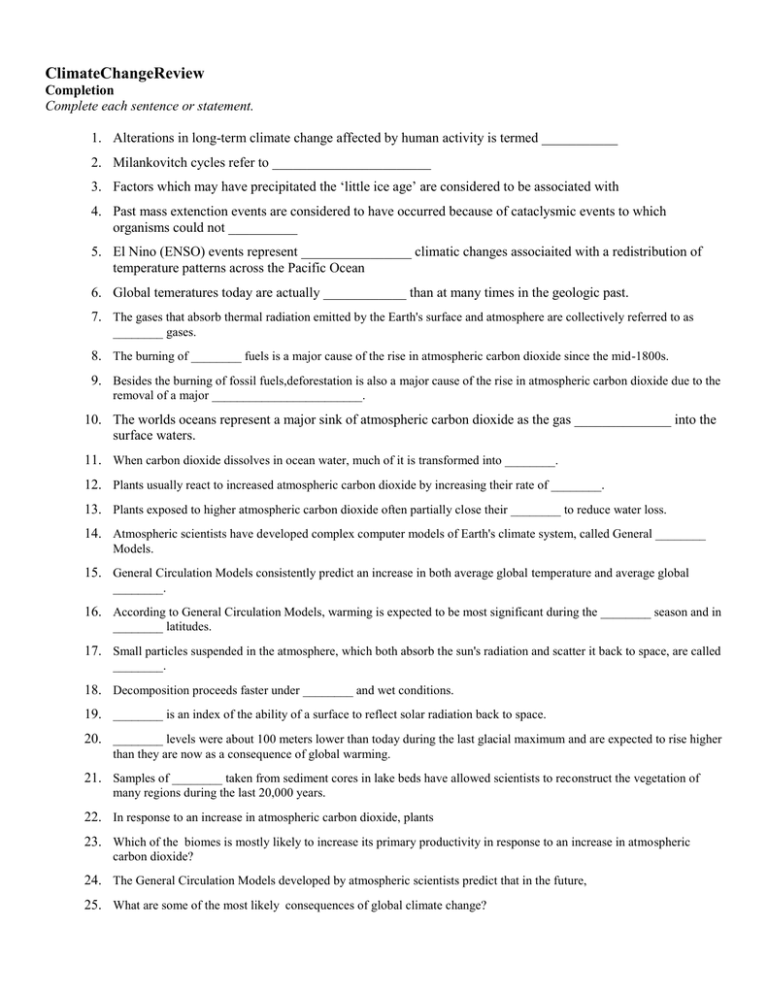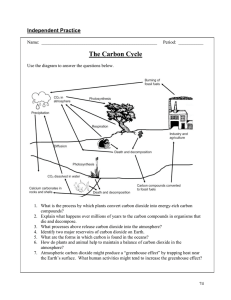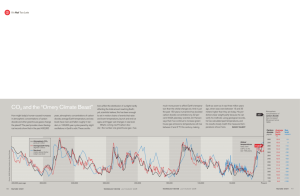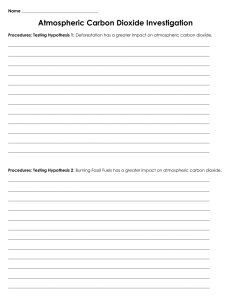ClimateChangeReview
advertisement

ClimateChangeReview Completion Complete each sentence or statement. 1. Alterations in long-term climate change affected by human activity is termed ___________ 2. Milankovitch cycles refer to _______________________ 3. Factors which may have precipitated the ‘little ice age’ are considered to be associated with 4. Past mass extenction events are considered to have occurred because of cataclysmic events to which organisms could not __________ 5. El Nino (ENSO) events represent ________________ climatic changes associaited with a redistribution of temperature patterns across the Pacific Ocean 6. Global temeratures today are actually ____________ than at many times in the geologic past. 7. The gases that absorb thermal radiation emitted by the Earth's surface and atmosphere are collectively referred to as ________ gases. 8. The burning of ________ fuels is a major cause of the rise in atmospheric carbon dioxide since the mid-1800s. 9. Besides the burning of fossil fuels,deforestation is also a major cause of the rise in atmospheric carbon dioxide due to the removal of a major ________________________. 10. The worlds oceans represent a major sink of atmospheric carbon dioxide as the gas ______________ into the surface waters. 11. When carbon dioxide dissolves in ocean water, much of it is transformed into ________. 12. Plants usually react to increased atmospheric carbon dioxide by increasing their rate of ________. 13. Plants exposed to higher atmospheric carbon dioxide often partially close their ________ to reduce water loss. 14. Atmospheric scientists have developed complex computer models of Earth's climate system, called General ________ Models. 15. General Circulation Models consistently predict an increase in both average global temperature and average global ________. 16. According to General Circulation Models, warming is expected to be most significant during the ________ season and in ________ latitudes. 17. Small particles suspended in the atmosphere, which both absorb the sun's radiation and scatter it back to space, are called ________. 18. Decomposition proceeds faster under ________ and wet conditions. 19. ________ is an index of the ability of a surface to reflect solar radiation back to space. 20. ________ levels were about 100 meters lower than today during the last glacial maximum and are expected to rise higher than they are now as a consequence of global warming. 21. Samples of ________ taken from sediment cores in lake beds have allowed scientists to reconstruct the vegetation of many regions during the last 20,000 years. 22. In response to an increase in atmospheric carbon dioxide, plants 23. Which of the biomes is mostly likely to increase its primary productivity in response to an increase in atmospheric carbon dioxide? 24. The General Circulation Models developed by atmospheric scientists predict that in the future, 25. What are some of the most likely consequences of global climate change?








